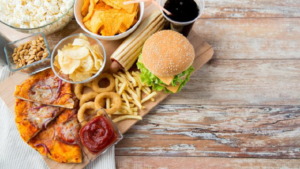How digital signage can boost customer dwell time at restaurants
페이지 정보

본문


Use of digital signage in the restaurant space has been growing exponentially as operators realize the flexibility, marketing and branding opportunities it provides. But there is another important reason to deploy digital signage for your brand: It increases dwell times and encourages increased spending while in the restaurant.
Applications for digital signage
There are four main areas to use digital signage in a restaurant’s customer-facing applications:
Outdoor. Some locations have drive-thrus and employ digital menu boards, but even restaurants without a drive-thru may use outdoor LCD and LED displays for branding, or to display the menu or promotions to foot traffic.
Indoor queue line. As customers wait, digital displays can show promotions, events or catering service information. Catering is an important part of many brands, especially because of workplaces ordering in lunch for a group, and promoting this service while customers wait is a prime marketing opportunity. Some brands also use self-service kiosks for the ordering process itself, letting customers select their meal and pay without having to wait for a cashier.
Menu boards. Many counter-service restaurants have crossed over to digital menu boards, and some restaurants also use displays to show order status for pickup and call ahead orders.
Dining area. Restaurants can run branding videos or entertainment, or show specials for high-margin products like beverages and desserts for a visual upsell while customers dine.
All of the above use cases help inform your customers and can increase their dwell time and spend. If done correctly, an added value is the reduction in a customer’s perceived wait time and thus their increased dwell time.
Stay a little longer
Customers who enter a QSR — if they even go in, instead of using the drive-thru — tend to get food to go, or eat quickly and then leave without lingering, because the nature of these brands inspires in-and-out business. The less rushed, less chaotic feel of fast-casual chains encourages customers to stay longer, relax and spend more money — and their dwell time can be increased through digital signage.
You can use digital displays to run promotions that get customers to stay longer and spend more – for example, a table-service restaurant can show seasonal drink specials, or a counter-service restaurant can advertise a deal in which a customer shows her lunch receipt to get $1 off a cookie purchase.
And although your customers are staying longer, digital signage helps ensure that they feel less pressed for time.
You can employ different kinds of display technologies for entertainment, including LCDs, video walls and even projectors. Some brands use projectors for interactive entertainment broadcast right onto a table surface or wall, while others might run games, infotainment or sports on digital displays and video walls.
The more relaxed, fun atmosphere this creates means your customers are less likely to eat and quickly leave. When families dine out, children are transfixed by the digital entertainment, while parents can relax and eat their food in peace – and maybe order coffee or dessert because the kids aren’t eager to go home.
You can deepen the connection by running games on dining-area displays and allowing customers to use their mobile devices to play, with winners scoring free food items or coupons. The more a customer interacts with the game – and the longer he or she stays – increases the odds of winning.
You also can engage by letting customers take photos of their food or themselves and post them to the brand’s social media page. The content then scrolls in near-real time on the location’s video wall or display. (The caveat here is that you must have an airtight vetting mechanism to ensure that any content stays on message and that customers are not posting inappropriate messages or photos.)
Customers in line to order can view promos, news or infotainment on displays as they wait, watch an interactive menu cycle through offerings (imagine a burger sizzling on a grill, or steam rising off a latte), or even enter their own order via self-service kiosk. Adding interaction via digital displays means the customer isn’t thinking, “I should have just gotten fast food,” as he or she waits to order and receive food that may be of better quality, but will take a little longer.
By encouraging longer dwell times and shorter perceived dwell/wait times through digital signage, your chain can increase the overall spend per guest and amplify engagement — ensuring the customer will be back.
Written by Richard Ventura
Image via Istock.com
